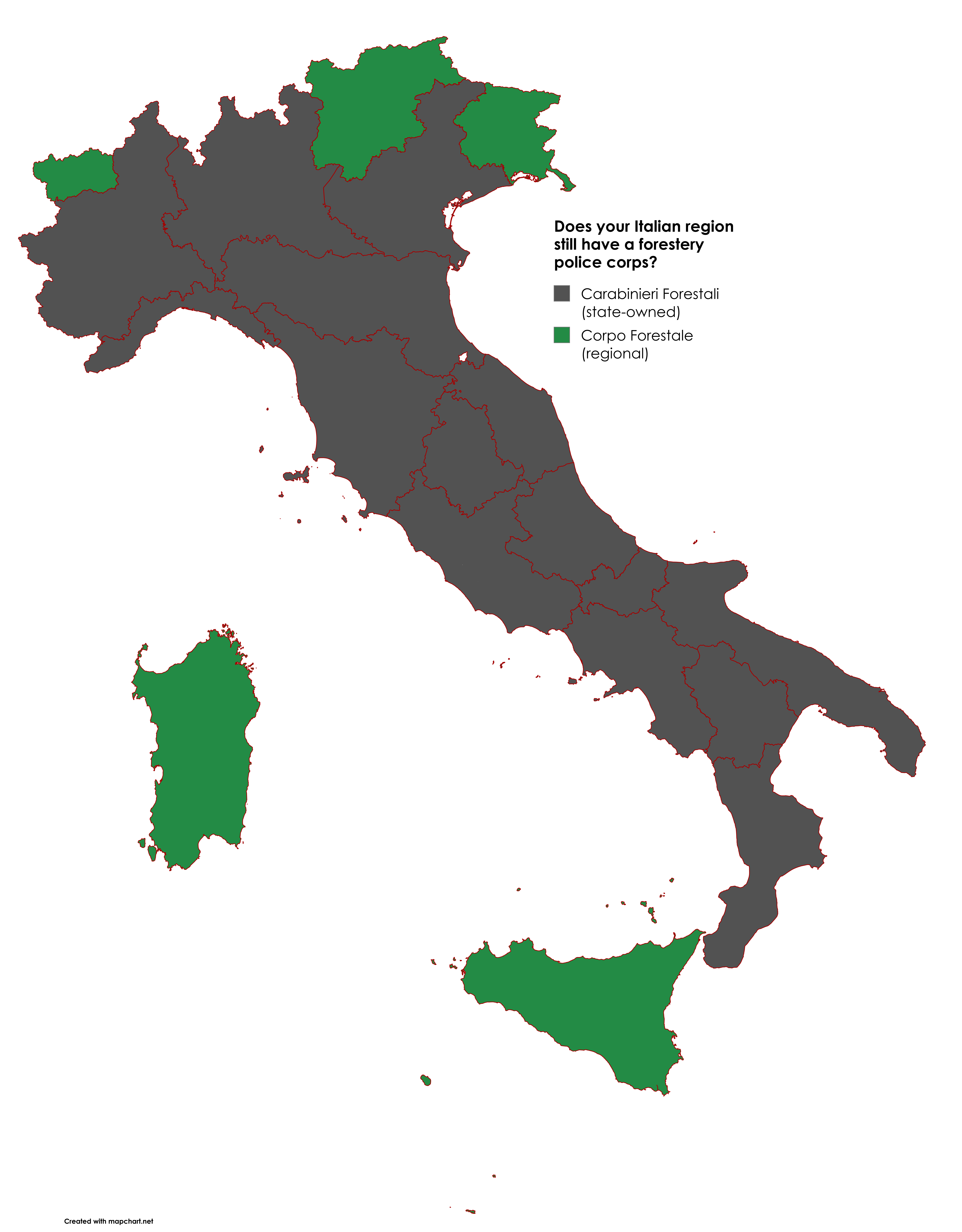Map of Italy's Forestry Law Enforcement


Alex Cartwright
Senior Cartographer & GIS Specialist
Alex Cartwright is a renowned cartographer and geographic information systems specialist with over 15 years of experience in spatial analysis and data...
Geographic Analysis
What This Map Shows
The map titled "A Map of Italy's Forestry Law Enforcement" provides a comprehensive overview of the various enforcement mechanisms and regulations governing forestry activities across Italy. This visualization highlights the distribution and effectiveness of law enforcement agencies tasked with protecting forested areas, combating illegal logging, and preserving biodiversity within these vital ecosystems. As we delve deeper into this topic, it is essential to understand the significance of forestry law enforcement in Italy and how it impacts the country's rich natural heritage.
Deep Dive into Forestry Law Enforcement in Italy
Forestry law enforcement involves the monitoring and regulation of forest resources to promote sustainable management practices. In Italy, this is crucial, as the country boasts over 10 million hectares of forests, accounting for approximately 34% of its total land area. These forests are not only vital for biodiversity but also play a crucial role in carbon sequestration, water regulation, and soil conservation.
Italy's forestry laws are governed by a combination of national and regional regulations, shaped by both European Union directives and local needs. The Italian government has established a framework that emphasizes the protection of forest ecosystems and promotes sustainable forestry practices. For instance, the Forest Code (Legislative Decree No. 227/2001) outlines the principles for forest management, including the sustainable use of forest resources, the protection of natural habitats, and the restoration of degraded areas.
Interestingly, the enforcement of these laws is managed by several agencies, including the Carabinieri Forestale, which is responsible for monitoring illegal activities such as poaching, illegal logging, and the unauthorized use of forest land. The map illustrates the geographical distribution of these enforcement units, revealing how some regions have a greater concentration of resources dedicated to forestry law enforcement than others. For example, areas with high biodiversity, like the forests of Trentino-Alto Adige, tend to have more robust enforcement initiatives.
Moreover, the map indicates the prevalence of illegal logging, a significant threat to Italy's forests. According to the European Commission, illegal logging in Italy is estimated to account for up to 20% of the timber market. This illicit activity not only undermines the sustainability of forest resources but also poses economic challenges to legal timber producers and affects local communities that rely on forest resources for their livelihoods.
Regional Analysis
Looking at the map, we can observe distinct variations in forestry law enforcement across different regions of Italy. For instance, the northern regions, particularly Trentino-Alto Adige and Friuli Venezia Giulia, are characterized by extensive forest cover and strong enforcement measures. These areas have made significant investments in monitoring and protecting their forests due to their ecological importance and tourism potential. The presence of the Carabinieri Forestale is notably higher here, reflecting the commitment to safeguarding these natural resources.
Conversely, in southern regions like Calabria and Sicily, enforcement appears to be less stringent. Here, illegal logging and land use changes are more prevalent, partly due to socio-economic factors and lower government oversight. This discrepancy raises questions about equity in resource management and the effectiveness of law enforcement strategies across regions.
By comparing the data reflected on the map, we can also see how specific enforcement initiatives, such as awareness campaigns and community involvement in forest management, vary regionally. For example, the Emilia-Romagna region has implemented successful community programs aimed at engaging local populations in sustainable forestry practices, contributing to better compliance with the law.
Significance and Impact
The enforcement of forestry laws in Italy is not just a matter of legal compliance; it has far-reaching implications for environmental sustainability, economic stability, and social equity. As forests play a crucial role in combating climate change by sequestering carbon, the protection of these areas is vital for meeting national and international climate goals. Additionally, healthy forests support biodiversity and contribute to the resilience of ecosystems against climate-related challenges.
Moreover, illegal activities like logging can significantly impact the local economy. The Italian forestry sector employs thousands of people, and illegal logging undermines legitimate businesses and threatens jobs. As such, strengthening enforcement mechanisms is essential not only for environmental protection but also for supporting the livelihoods of those who depend on forestry.
Looking ahead, Italy faces challenges in balancing enforcement with community needs. Increasing public awareness about the importance of forest ecosystems and promoting sustainable practices will be key to enhancing compliance with forestry laws. As we consider future projections, the ongoing monitoring and adaptation of enforcement strategies will be crucial in addressing emerging threats and ensuring the long-term sustainability of Italy's invaluable forests.
Visualization Details
- Published
- August 18, 2025
- Views
- 114
Comments
Loading comments...